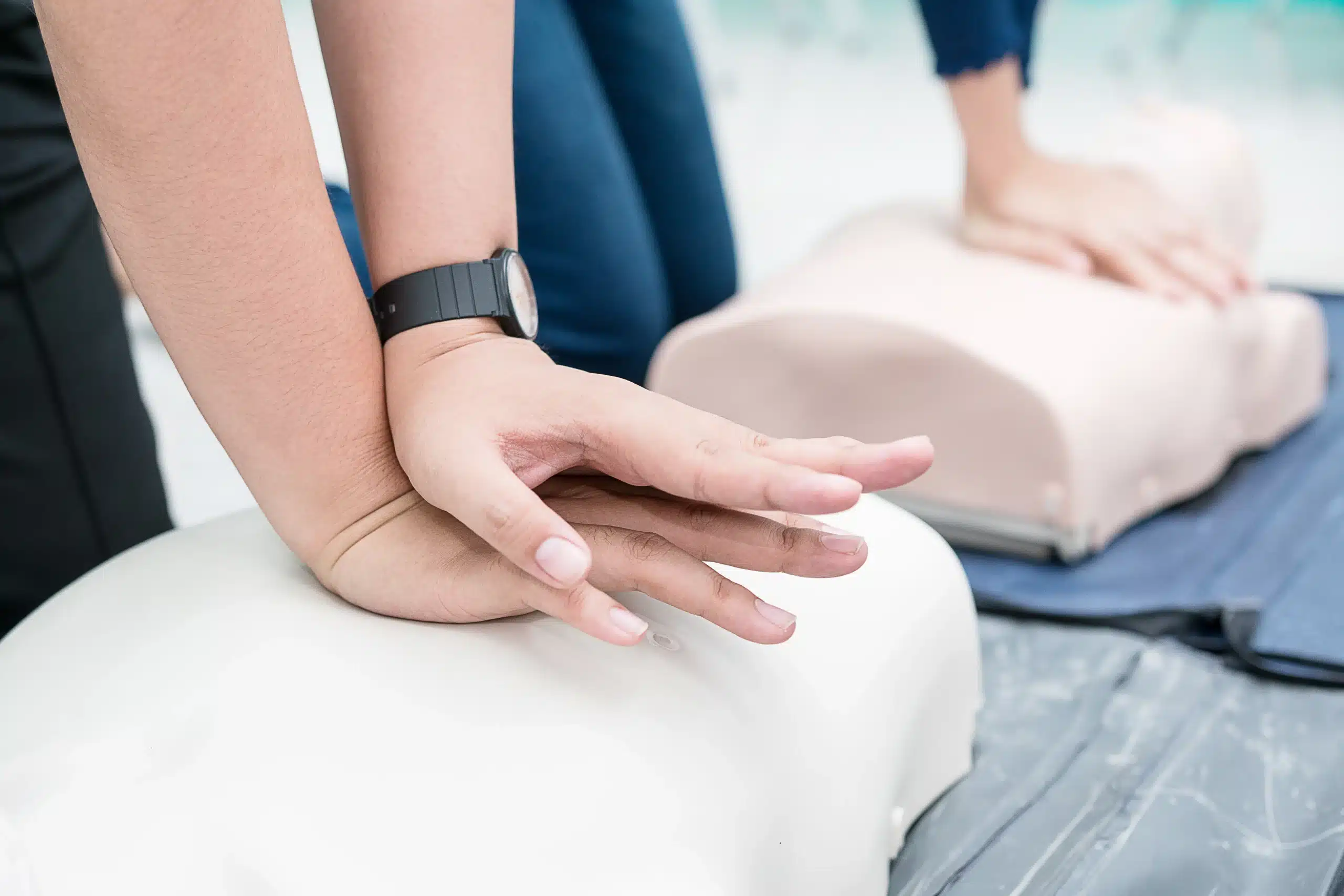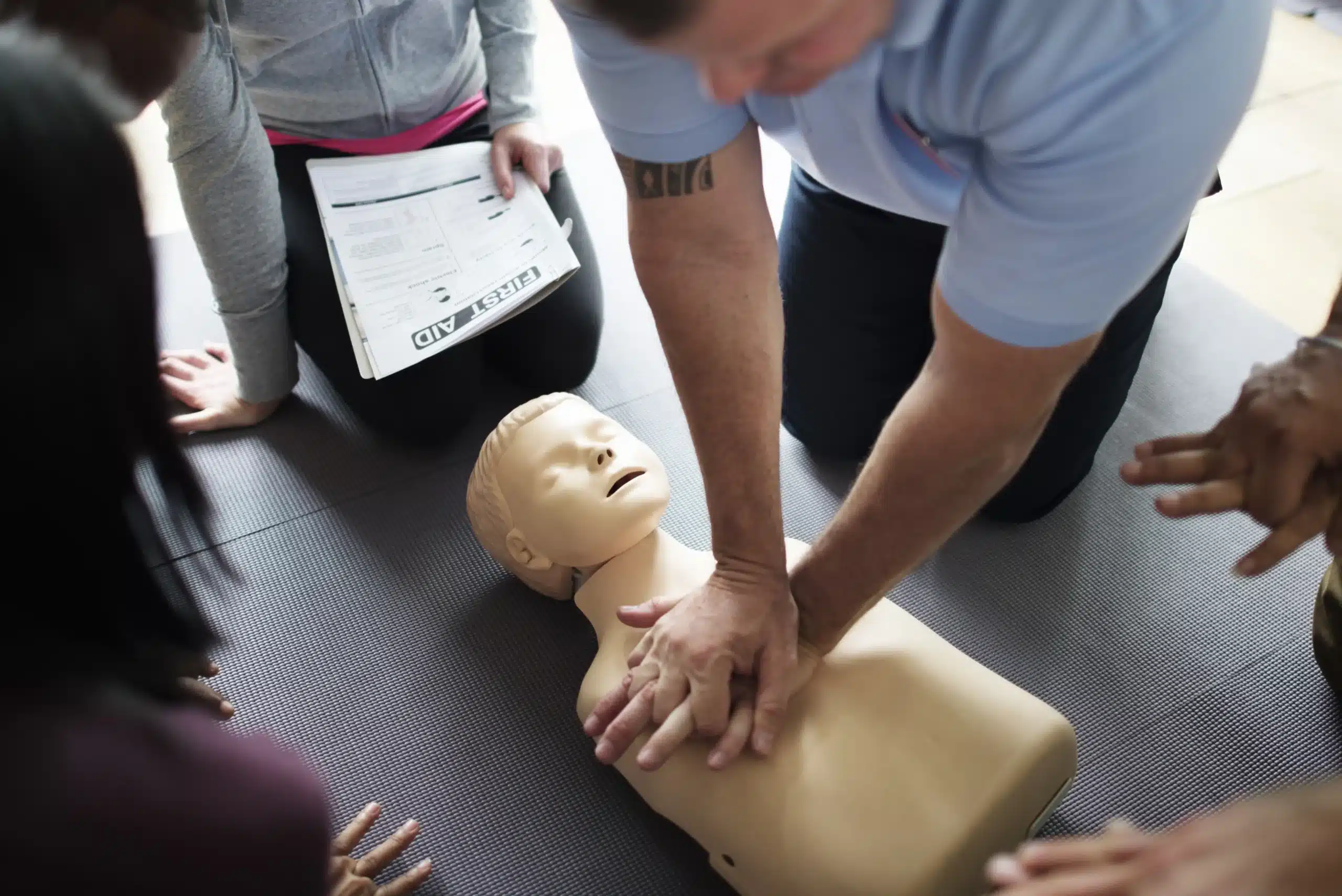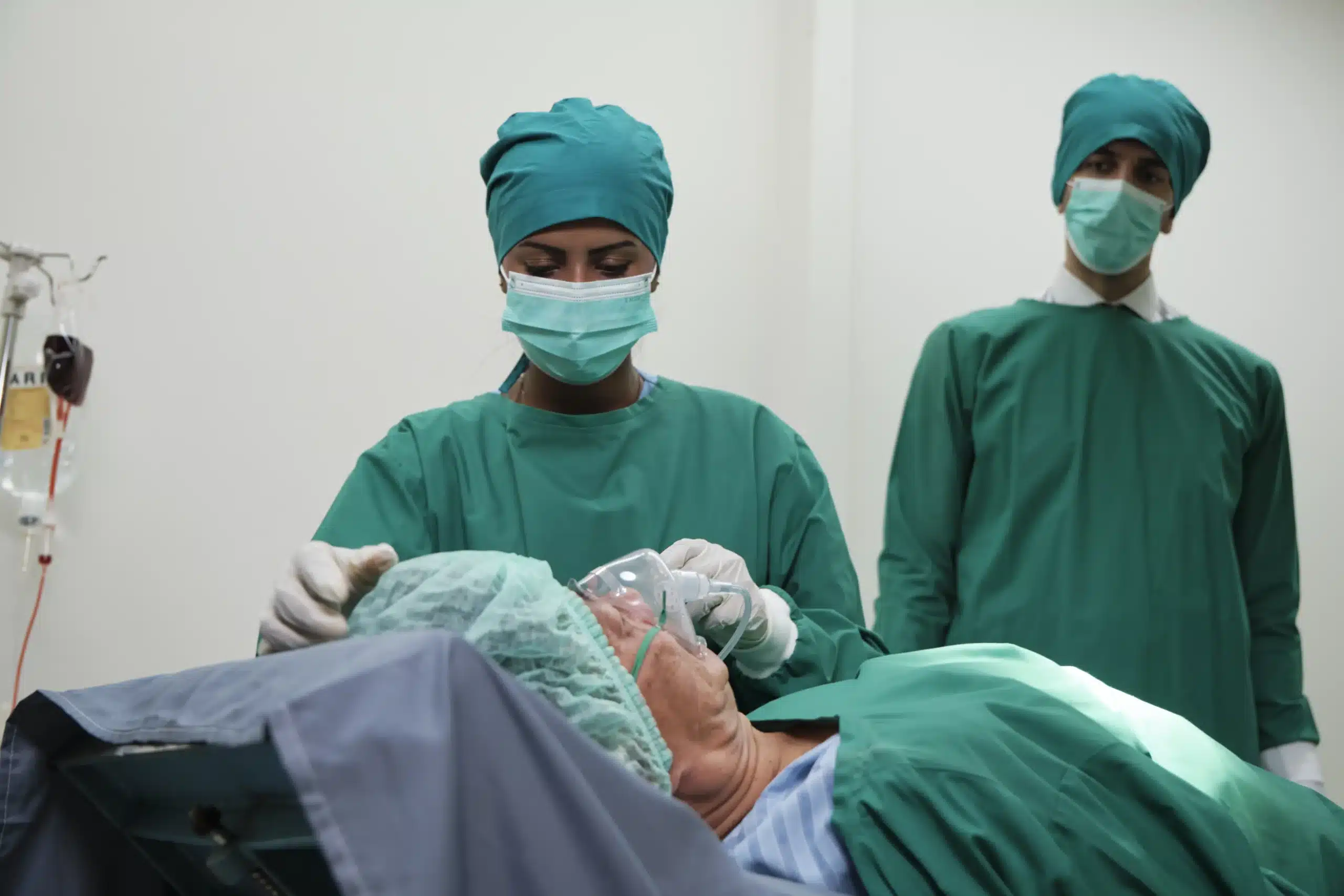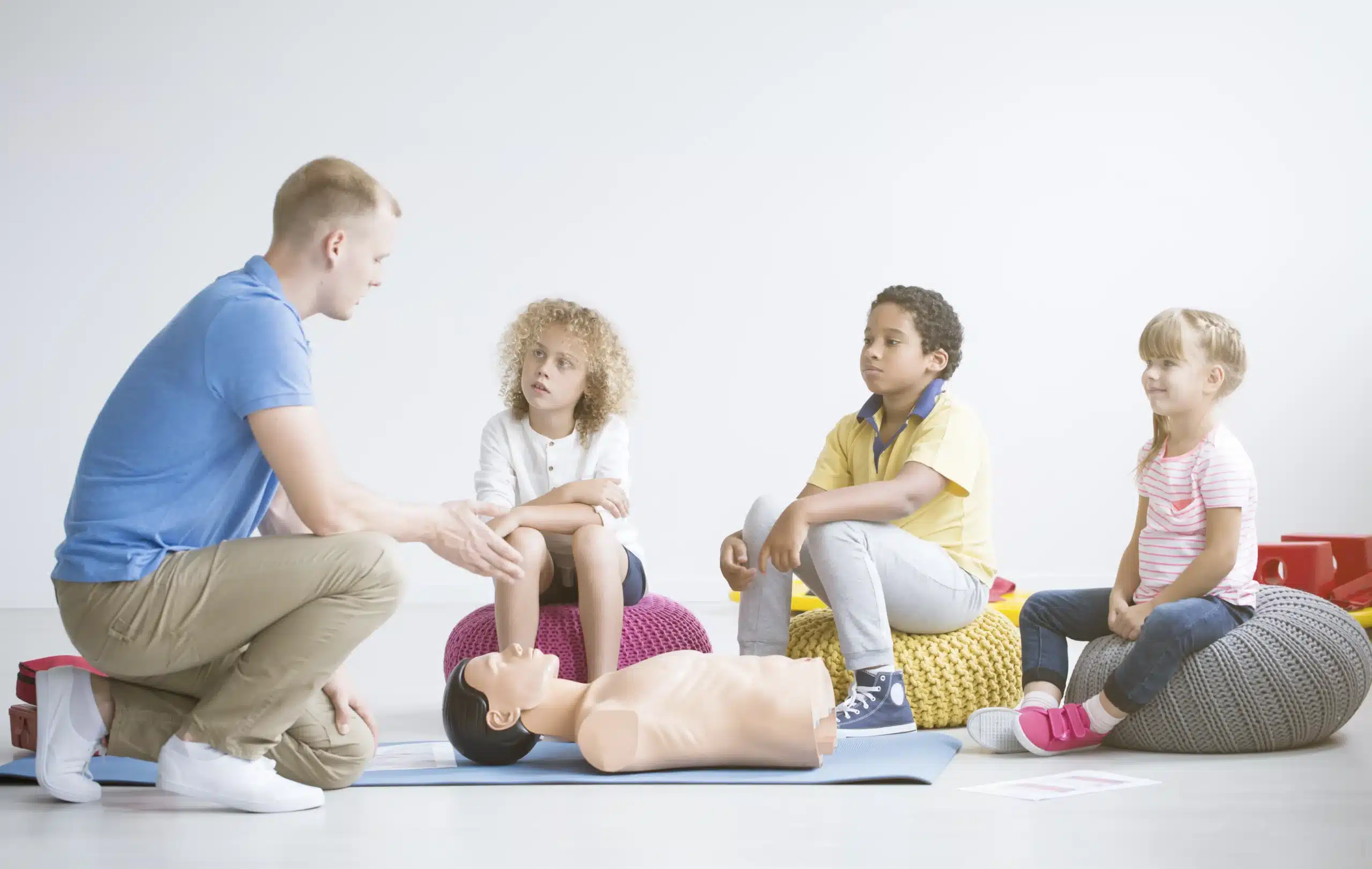Empowering yourself with life-saving skills is one of the most valuable things you can do. BLS training, or Basic Life Support training, provides the foundation for responding effectively in medical emergencies. From recognizing the signs of a heart attack to performing high-quality CPR, you’ll learn the techniques that can significantly improve patient outcomes. If you’ve been searching for “bls training near me,” this article will provide a comprehensive overview of BLS, including the key skills you’ll learn, the importance of BLS in emergencies, and how to find the right training program for your needs. We’ll also explore the different types of BLS courses available and what to expect during the training process.
Key Takeaways
- BLS skills empower you in emergencies: Learning CPR, using an AED, and recognizing medical emergencies makes you a vital first responder.
- Finding the right course fits your needs: Consider in-person, online, or hybrid formats, course length, and cost when choosing a BLS program. AHA-authorized training centers offer quality instruction.
- Hands-on practice builds confidence: BLS courses offer practical training and lead to a nationally recognized certification. Renewing your certification keeps your skills sharp.
What is BLS Training?
Basic Life Support (BLS) training equips you with the skills to respond to medical emergencies like cardiac arrest, respiratory distress, and choking. It’s a vital credential for healthcare providers and anyone who wants to be prepared for a crisis. BLS training emphasizes early intervention and high-quality CPR, crucial elements in the chain of survival. You’ll learn to recognize life-threatening situations and provide immediate care until professional help arrives. This training empowers you to make a real difference and potentially save lives. For a deeper dive into BLS certification and its role in education and training, take a look at this resource on BLS Certification.
Key Skills You’ll Learn
BLS certification covers essential life-saving techniques, including high-quality CPR, using an automated external defibrillator (AED), and basic airway management. You’ll also learn to spot the signs of a heart attack and stroke. Effective chest compressions and rescue breaths are key components of CPR, and you’ll practice these skills extensively. Proper AED use can significantly increase the chances of survival in cardiac arrest cases. BLS courses also emphasize teamwork and communication, preparing you to work effectively with others in emergencies. For additional tips on improving your BLS skills, this article on basic life support offers helpful advice.
Why BLS Matters in Emergencies
Immediate, high-quality BLS dramatically improves patient outcomes in emergencies. Bystander CPR, in particular, has been shown to increase survival rates. When someone experiences cardiac arrest, their heart stops pumping blood effectively, depriving the brain and other vital organs of oxygen. Every second counts, and starting CPR immediately helps maintain blood flow and oxygen delivery until professional help arrives. BLS training also emphasizes the importance of early recognition and activating the emergency medical services (EMS) system. The American Heart Association offers guidance on BLS training for healthcare providers, highlighting its impact on patient outcomes. Community initiatives promoting BLS and bystander CPR have also proven effective, as detailed in this review. By learning BLS, you become a vital link in the chain of survival, ready to respond effectively and potentially save a life.
Find BLS Training Near You
Finding the right BLS training program is easier than you think. Here are a few ways to locate a course that fits your needs:
Search BLS Training Online
A quick online search for “BLS training near me” is a great starting point. You can also include your city name for more targeted results. The American Heart Association offers BLS CPR classes through authorized training centers and instructors, making it easy to find a credible program. Searching online allows you to compare course schedules, locations, and pricing.
Check Local Hospitals and Clinics
Hospitals and clinics often host BLS training courses for both their staff and the community. Check their websites or contact them directly to inquire about upcoming classes. BLS certification equips you with essential life-saving skills, enabling you to respond effectively to emergencies like cardiac arrest and choking.
Contact Community Centers and Fire Departments
Many community centers and fire departments offer BLS training to residents. These courses are often a valuable resource for learning CPR and basic life support techniques. Community initiatives like these play a crucial role in improving bystander CPR rates and overall community preparedness. Contact your local community center or fire department to explore available programs.
Look for AHA Training Centers
The American Heart Association (AHA) has a network of authorized training centers that provide high-quality BLS courses. These centers often offer a range of courses, including ACLS (Advanced Cardiovascular Life Support) and PALS (Pediatric Advanced Life Support). Finding an AHA Training Center ensures you’re receiving instruction that meets the AHA’s standards. Providers like Safety Training Seminars offer these advanced courses in various locations.
Compare BLS Training Options
Deciding on the right BLS training course involves a few key comparisons. Think about your learning style, budget, and schedule as you explore these options.
Training Formats: In-Person, Online, and Hybrid
BLS training comes in several formats. In-person classes offer hands-on learning and direct interaction with instructors. Online courses provide flexibility, allowing you to learn at your own pace. Hybrid programs combine online learning with in-person skills sessions, giving you the best of both worlds. Many CPR training providers in Vallejo offer a blend of these formats, so you can choose what fits your lifestyle.
Course Length and Content
BLS courses typically run between four and six hours, covering essential life-saving skills. You’ll learn how to respond to cardiac arrest, choking, and other emergencies. This training is valuable for both personal preparedness and meeting professional requirements. The Vallejo CPR classes curriculum follows the latest American Heart Association guidelines.
Costs and Discounts
BLS course fees vary depending on the provider, format, and location. Safety Training Seminars in Vallejo is known for competitive pricing and a low-price guarantee. Vallejo CPR Classes often has discounts, making high-quality training more accessible. Don’t hesitate to ask about potential discounts for students, groups, or returning learners. Check out the low price guarantee for more information.
Top BLS Training Providers
Several reputable organizations offer BLS training. Here are a few to consider:
Vallejo CPR Classes
Vallejo CPR Classes provides a range of AHA-certified courses, including BLS, ACLS, and PALS. They focus on flexible scheduling and a low-price guarantee, making it easier to fit training into your busy life. Contact us to learn more.
American Heart Association
The American Heart Association (AHA) sets the standard for CPR and emergency cardiovascular care. They offer various BLS courses designed for healthcare providers and the general public.
Red Cross
The American Red Cross is a well-known provider of BLS certification and renewal training. Their courses are geared towards healthcare professionals and first responders.
National Safety Council
The National Safety Council offers a range of safety training programs, including BLS. They emphasize emergency response and workplace safety.
American Safety & Health Institute
The American Safety & Health Institute (ASHI) provides BLS training courses tailored to healthcare providers and the general public. They offer various learning formats to suit different needs.
What Happens in a BLS Course?
A BLS course isn’t just about lectures and videos—it’s about actively developing lifesaving skills. You’ll learn the techniques and gain the confidence to respond effectively in various emergency situations.
Hands-On Practice
BLS certification covers essential emergency response skills like CPR, using an AED, and basic airway management. In a BLS course, you’ll practice these skills extensively through hands-on training with mannequins, simulating real-life scenarios. This gives you the chance to apply chest compressions, rescue breaths, and other techniques in a safe learning environment. Regularly practicing your BLS skills is crucial for maintaining proficiency, making these hands-on sessions a vital part of the course.
Getting Certified
After you’ve completed the course and passed the skills test, you’ll receive your official American Heart Association (AHA) BLS Provider certification card. This nationally recognized certification validates your skills and knowledge in basic life support. The AHA offers BLS CPR classes in Vallejo through authorized training centers like Vallejo CPR Classes, ensuring you receive high-quality instruction.
Certification Renewal
Your BLS certification is typically valid for two years. Renewing your certification is straightforward—simply retake the BLS course before your current certification expires. This ensures your skills stay sharp and you remain up-to-date on any changes in BLS guidelines. Maintaining your BLS certification is essential because it equips you with the ability to respond effectively during emergencies, potentially improving outcomes. Studies have shown that community training programs and interventions can significantly improve bystander CPR rates, highlighting the importance of widespread BLS training. You can learn more about BLS certification best practices to understand its importance in emergency preparedness.
Choose the Right BLS Provider
Finding the right BLS training provider is crucial for a valuable learning experience. Here’s what to consider when making your decision:
Accreditation and Recognition
Look for training centers with accreditation from respected organizations like the American Heart Association (AHA). AHA accreditation ensures your BLS CPR classes meet the highest standards for quality and effectiveness, giving you the confidence to respond effectively in emergencies. This accreditation confirms the program adheres to evidence-based guidelines and best practices. Vallejo CPR Classes is affiliated with Safety Training Seminars, a trusted AHA Training Center. This affiliation ensures that the training you receive aligns with the latest AHA guidelines.
Instructor Qualifications
Experienced instructors are essential for effective BLS training. Instructors certified in AHA BLS, ACLS, and PALS demonstrate a commitment to high-quality instruction. Their expertise ensures you learn from knowledgeable professionals with up-to-date skills. Ask the provider about instructor credentials before enrolling to confirm their qualifications and experience. A strong instructor can make all the difference in your learning experience.
Student Reviews and Success Rates
Positive student reviews and high success rates are excellent indicators of a quality BLS program. Look for reviews that mention engaging instruction, hands-on practice, and helpful feedback. Research shows that effective training programs significantly improve bystander CPR rates and outcomes in real-life emergencies. A program with a strong track record can give you confidence in your ability to respond effectively. Consider checking online reviews or asking for testimonials from past students.
Employer-Recognized Certifications
Ensure the BLS certification you receive is widely recognized by employers. A certification from a reputable organization like the AHA is often a requirement for healthcare and emergency response jobs. BLS certification demonstrates your competence in providing basic life support. Confirm the certification’s validity and acceptance within your desired field before registering for a course. This will ensure your certification meets the necessary requirements for your profession.
Related Articles
- BLS Certification in American Canyon: Your Guide – Vallejo CPR Classes
- BLS for Healthcare Providers in Benicia – Vallejo CPR Classes
- BLS Classes in American Canyon: Your Complete Guide – Vallejo CPR Classes
- Why CPR is Important in Healthcare – Vallejo CPR Classes
- HeartCode BLS in Vallejo: Your Complete Guide – Vallejo CPR Classes
Frequently Asked Questions
What does BLS stand for and why is it important? BLS stands for Basic Life Support. It’s a crucial set of skills that enables you to assist someone experiencing a life-threatening medical emergency like cardiac arrest, choking, or respiratory distress. It emphasizes early intervention and providing immediate care until professional medical help arrives. Learning BLS can empower you to potentially save a life.
How do I find a BLS class near me? Finding a BLS class is easy! Start with a quick online search using keywords like “BLS training near me” or “CPR classes near me.” You can also check local hospitals, clinics, community centers, and fire departments, as they often offer these courses. The American Heart Association website is another great resource for locating authorized training centers in your area.
What’s the difference between online, in-person, and hybrid BLS courses? In-person classes provide hands-on training and direct interaction with instructors. Online courses offer flexibility, allowing you to learn at your own pace from anywhere. Hybrid courses combine online learning with in-person skills sessions, offering a blend of convenience and practical experience. Consider your learning style and schedule when choosing the format that suits you best.
How long does BLS certification last and how do I renew it? BLS certification is typically valid for two years. To renew your certification, you’ll need to retake the BLS course before your current certification expires. This ensures your skills and knowledge are up-to-date with the latest guidelines.
What should I look for when choosing a BLS training provider? Look for providers accredited by reputable organizations like the American Heart Association. Check instructor qualifications, read student reviews, and confirm that the certification is recognized by employers in your field. A provider with experienced instructors, positive reviews, and a recognized certification will offer a higher quality learning experience.





